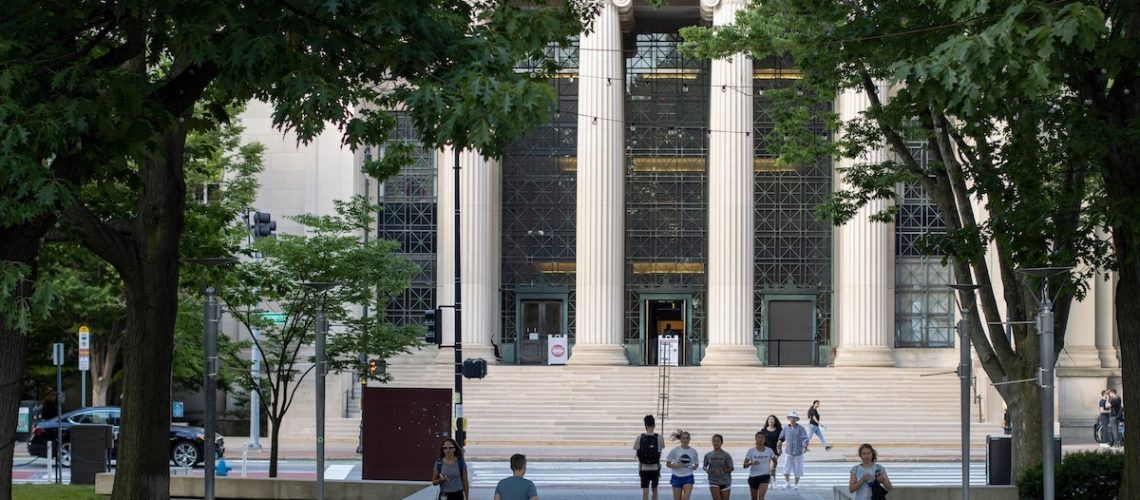Can a person be more than just one thing? It may seem like a ridiculous question, but it is one that often plagues the minds of many people in the public. Whether it’s career, religion, or passion, all of us search for some keystone to our identity.
Boiling Down to Basics

The truth is, we think deeply about ourselves, but very rarely return the courtesy to our fellow man. Whether it be for the sake of sanity or brevity, thoughts of others are often distilled into their rudimentary parts.
Seeing Only Differences

This becomes more and more common the more someone differs from the holder’s viewpoint. Those that have little in common with us as an observer, tend to be signaled out by their biggest difference.
Adapting to the Times

Trying to adopt multiple facets can be difficult. Especially if these wedges of self seem contradictory or unusual. This is the case many in the LGBTQ+ community find when attempting to branch out into other roles.
MIT Represents

No one knows this better than media expert Jack Forman. Forman is PhD candidate at MIT, and is heavily involved in the campus’s LGBTQ+ Grad group. The organization seeks to empower queer individuals in the higher education sphere.
No Contradictions

“My identity as a scientist and my identity as a gay man are not contradictory, but complimentary,” comments Forman. His statement highlights a key issue of overlooking queer academics and their contributions to a host of disciplines.
Beneath the Surface

Within the US, queer people face a myriad of discrimination within any occupational setting, but few would venture to guess that academia would be laced with it. After all, educated people should know better.
Well-Documented Discrimination

However, the ins and outs of scholarly research are rife with social hazards. Anecdotes about oppressive advisors and withheld opportunities are no stranger to many minority academicians.
Fight to Be Seen

This is why Forman, alongside his co-leaders of the group, Tunahan Aytas and Miranda Dawnson, fight for the right of visibility within their university. Their efforts are meant to pave the way for those hoping to feel safe while pursuing graduate education.
Climbing the Ladder

“As queer graduate students, we find community in our peers. However, as one progresses up the academic ladder, it can be harder to find examples of queer people in higher positions…” states Dawnson.
Finding One’s Place

She continues her sentiment by addressing her main motivation behind joining the group: “Bringing visibility to the queer faculty helps younger queer academics find a greater sense of community,”.
Opening the Door

Dawson is currently studying to obtain her PhD in Biological Engineering, no easy feat. By blending two integral aspects of who she is, she is making it easier for more people to be themselves.
A Comforting Presence

The organization may be student led, but it is not just alive to support learners. Nergis Mavalvala is the dean for the MIT School of Science, and finds the group’s existence to be a great comfort.
Safety Is Top Priority

Mavalvala noted that “In professional settings, people need to create spaces for researchers to be able to discuss their scientific work and also be queer. That gives a sense of safety.”
Acting Local

Local activism like what LGBTQ+ Grad does is critical to progressing national acceptance. It allows a place for queer students and faculty to come together and discuss the daily struggles happening on campus or in their city.
Global Impact

Backing of the group by the university is also vital to its success. MIT is held in high regard for academic rigor, and holds plenty of international influence in the research world.
Giving Back

During the month of pride, notable work like what is happening at MIT is especially visible, as many of LGBTQ+ Grad’s members can use the time to participate in regional pride events.
A Social Mirror

With the boosted visibility brings opportunity. Many young queer people with dreams of entering the academic arena may be inspired by seeing that they are not alone. It makes these aspirations a little more tangible.
The Goal Is Simple

The hope for the group is put best by Dawnson, “We would love it if a young queer person with curiosity and a love for learning saw this video and realized that they belong here, at a place like MIT,”.
Here, Queer, and Going Nowhere

While there may be opposition to groups like this on campuses, their presence heralds a powerful conversation about what it means to be out and proud. And it is clear their presence is not dwindling any time soon.
The post Queer Belongs Here, Says MIT Amid Concerns for LGBTQ Safety and Visibility in Academia first appeared on Pulse of Pride.
Featured Image Credit: Shutterstock / Tada Images.

